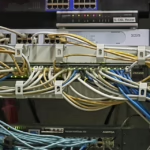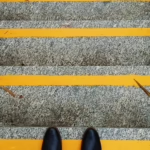Brewed Awakening: Top Coffee Shops and Breweries Near You
In recent years, the coffee culture has expanded immensely, moving beyond classic coffee shops into spaces that combine the artistry of brewing with community engagement. From exquisite single-origin beans to craft brews, coffee shops and breweries have become cultural hubs in their neighborhoods. This article explores some of the top coffee shops and breweries across various regions, providing a guide for coffee aficionados and casual drinkers alike.
The Rise of the Artisan Coffee Movement
The artisan coffee movement has revolutionized how we perceive coffee, emphasizing quality over quantity. Unlike traditional coffee chains, artisan coffee shops focus on sourcing high-quality beans, often engaging in direct trade with farmers. The result is not just a beverage but a story in every cup. Artisan roasters experiment with different brewing methods, from pour-over to cold brew, emphasizing flavor profiles that speak to terroir.
For instance, coffee shops like Blue Bottle Coffee in San Francisco and Stumptown Coffee Roasters in Portland have gained recognition for their meticulous approach to coffee. They roast their beans in small quantities, ensuring freshness and allowing for experimentation with various brewing techniques.
Top Cities for Artisan Coffee
-
Seattle, WA: Known as the birthplace of Starbucks, Seattle is rich in a diverse coffee culture. Local favorites like Victrola Coffee Roasters and Vif Coffee shine with their unique blends and welcoming atmospheres.
-
Portland, OR: This city is home to an array of independent coffee shops that pride themselves on their quality. Check out Clandestino Coffee and Coava Coffee Roasters for spectacular brews.
-
San Francisco, CA: With its hilly streets and picturesque views, San Francisco is also a coffee lover’s paradise. Besides Blue Bottle, Four Barrel Coffee offers a deep dive into the world of coffee brewing.
Exploring Local Breweries
The craft beer boom has paralleled the artisan coffee movement, with local breweries popping up in cities across the nation. Breweries are now much more than just places to grab a pint; they often serve as gathering spots for craft enthusiasts and community members alike.
Why Choose Local Breweries?
Local breweries often use local ingredients and focus on sustainable practices. This not only enriches the flavor of the beer but also fosters a sense of community. Establishments such as Stone Brewery in Escondido, California, and Dogfish Head Brewery in Delaware are excellent examples of how innovation in brewing can stem from local roots.
Popular Brewing Techniques
-
Souring: This technique involves fermenting beer using wild yeast strains, creating a refreshing and tart profile.
-
Dry Hopping: Adding hops at a later stage of fermentation enhances aroma without introducing bitterness.
-
Barrel Aging: This process involves aging beer in used barrels from whiskey or wine, contributing unique flavors from the wood and previous contents.
Hybrid Coffee Shops and Breweries
In a delightful twist, some establishments have begun to combine the best of both worlds—serving artisan coffee during the day and transitioning into a brewery in the evening. These hybrid spots create unique experiences, allowing customers to enjoy a caffeine buzz before settling in for a craft beer.
Notable Hybrid Spots
-
Coffee and Beer Co. in Brooklyn, NY, features artisanal coffee by day and some of the best craft beers in the city by night.
-
Sump Coffee in St. Louis offers a rotating selection of local beers alongside their meticulously brewed coffee concoctions.
-
Café du Monde in New Orleans has taken this hybrid concept a step further by offering café au lait alongside unique craft ales.
Coffee and Beer Pairings—An Emerging Trend
As the boundaries between coffee and beer blur, pairing these beverages has become a new frontier for enthusiasts. Coffee beers, often brewed with real coffee or coffee flavors, are gaining popularity. Pairing suggestions might include:
- Dark Roasted Stout with a rich espresso for a harmonious flavor profile.
- Coffee Cream Ale served alongside a light cappuccino for a refreshing start to the day.
Many breweries are exploring these pairings through taste events that allow participants to experience the depth of flavor in both beverages.
Craft Your Own Brewed Awakening Experience
If you’re looking to create your own brewed awakening experience, consider the following steps:
-
Explore Local Shops: Use platforms like Yelp or Google Maps to discover coffee shops and breweries in your area, focusing on those that emphasize quality and sustainability.
-
Attend Cupping Events: Many coffee shops host cupping sessions where you can taste and learn about different coffee beans.
-
Sign Up for Brewery Tours: Local breweries often offer tours that educate visitors on the brewing process and allow for beer tastings.
-
Host a Pairing Night: Invite friends for an evening of coffee and beer pairings, experimenting with local products.
Conclusion
In summary, the world of coffee shops and breweries is more dynamic than ever, encouraging a culture of quality, sustainability, and community. By exploring artisan coffee and craft breweries—whether in your hometown or during your travels—you not only support local economies but also partake in a significant cultural movement. Enthusiasts can enjoy these beverages not only as refreshments but as experiences that connect communities across regions.
References
This article draws on various sources, including local coffee shops’ websites, brewery profiles, and interviews with coffee roasters and brew-masters—offering a well-rounded view of the current landscape of artisan coffee and craft beer. For more in-depth knowledge, explore resources like:
Ultimately, whether you are a coffee lover, a beer enthusiast, or simply someone who enjoys good company, these spaces offer a nuanced understanding of two beloved beverages, inviting you to explore their rich histories, diverse flavors, and the stories behind each cup and pint.


























Add Comment